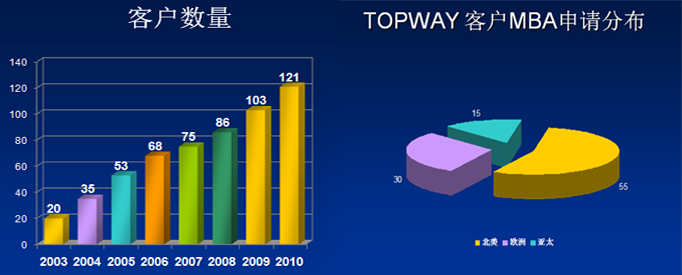RC-8 物种灭绝
【版本1】最长的那篇大概起码是一点五倍屏幕...是说extiction的 提出一个理论说星体撞地球,通过天气的变化使物种大量灭绝了.
然后有fossil evidence来反驳这个理论 说有一些对温度敏感的生活没有受到影响 最后又反过来说 其实如果考虑什么什么的话还是能解释清楚的.
最后一两段不是那么能懂...题目想不起来了.
其他朋友补充:第二篇是地球上65million年前一次生物大灭绝的情况,有一种理论认为是一个小行星撞地球引起的,但是有证据表示:其实除了恐龙以外,灭绝的物种很少。有一种叫什么什么的动物,它非常脆弱,却也顽强的活了下来。后来又发现证据:说是在灭绝以前,海洋就不断向周边的陆地侵蚀,造成了许多植物的死亡,而这些是恐龙的主要食物
JJ主人回复:跟第二篇有点像,说的是除像恐龙这种食草、陆地动物外,其他动物(如小型动物、水生动物)因为对陆生植物依赖较小,因而受影响较小。还有一题出在这里,比较哪种动物对陆生植物(还是什么来着)的依赖性。
关于“海洋就不断向周边的陆地侵蚀,造成了许多植物的死亡,而这些是恐龙的主要食物”的理论,我没有印象了...
RC-9 灰尘
【版本1】还碰到一个关于 dust and wavelength的阅读,这个也挺长,最后决定不能再看了, 再看电脑屏幕都龟裂了. dust will obsorb most light except for red, since dust articles are too large compared to wavelength of red light. 有个analogy跟ocean light比来说明dust的大小影响光线的吸收。
RC-10 修改测量数据 (GWD 原文,注意JJ作者确认第一道题有变化)
【版本1】20世纪70年代的中国用19世纪80年的英国测量某山的方法进行对英国原来错误数据的更改。
【版本2】测量珠穆朗玛峰高度, 中国人改正了英国人在测量中的一些问题.(我看到Chinese眼睛就发亮了)
GWD-26-Q32-Q35 中国人改进了英国人测量珠峰高度的方法
In 1975 Chinese survey teams
remeasured Mount Everest, the highest
of the Himalayan mountains. Like the
British in 1852, they used the age-old
Line (5) technique of “carrying in” sea level:
surveyors marched inland from the
coast for thousands of miles, stopping
at increments of as little as a few feet
to measure their elevation, and mark-
(10) ing each increment with two poles.
To measure the difference in elevation
between poles, surveyors used an
optical level—a telescope on a level
base—placed halfway between the
(15) poles. They sighted each pole, read-
ing off measurements that were then
used to calculate the change in eleva-
tion over each increment. In sight of
the peaks the used theodolites—
(20) telescopes for measuring vertical and
horizontal angles—to determine the
elevation of the summit.
The Chinese, however, made
efforts to correct for the errors that
(25) had plagued the British. One source
of error is refraction, the bending of
light beams as they pass through air
layers of different temperature and
pressure. Because light traveling.
(30) down from a summit passes through
many such layers, a surveyor could
sight a mirage rather than the peak
itself. To reduce refraction errors, the
Chinese team carried in sea level to
(35) within five to twelve miles of Everest’s
summit, decreasing the amount of air
that light passed through on its way to
their theodolites. The Chinese also
launched weather balloons near their
(40) theodolites to measure atmospheric
temperature and pressure changes
to better estimate refraction errors.
Another hurdle is the peak’s shape.
When surveyors sight the summit.
(45) there is a risk they might not all
measure the same point. In 1975
the Chinese installed the first survey
beacon on Everest, a red reflector
visible through a theodolite for ten
(50) miles, as a reference point. One
more source of error is the uneven-
ness of sea level. The British
assumed that carrying in sea level
would extend an imaginary line from
(55) the shore along Earth’s curve to a
point beneath the Himalaya. In
reality, sea level varies according
to the irregular interior of the planet.
The Chinese used a gravity meter to
correct for local deviations in sea level.
-------------------------------------------------------------
Q32
It can be inferred from the passage that
refraction would be most likely to cause
errors in measurements of a mountain’s
elevation under which of the following
conditions?
A. When there are local variations in sea
level
B. When light passes through humid air
C. When theodolites are used relatively far
from the mountain peak.
D. When weather balloons indicate low air
temperature and pressure.
E. When sea level has been carried in to
within five to twelve miles of the summit.
-------------------------------------------------------------
Q33
Which of the following best describes the
purpose of the sentence in lines 23-25
(“The Chinese…the British”)?
A. Introduce a definition
B. Signal a transition in focus
C. Summarize the preceding paragraph
D. Draw a contrast between two different
theories.
E. Present information that contradicts the
Preceding paragraph.
----------------------------------------------------
Q34
Which of the following is NOT mentioned as a
possible source of error in surveying mountain
elevation?
A. Mirages
B. Refraction
C. Inaccurate instruments
D. Variations in sea level
E. Uncertainty about the exact point to be
Measured
---------------------------------------------------
Q35
The primary purpose of the passage is to
A. provide details about improvements to a
process
B. challenge the assumptions underlying a
new method
C. criticize the way in which a failed project
was carried out
D. call for new methods to solve an existing
problem
E. explain the theory behind a new technique
| 






